If you’re curious about these ancient green beauties, you’ve come to the right place. Unfurling a breathtaking array of foliage, ferns never fail to captivate with their intricate patterns and resilient nature.
In this article, we’ll take a deep dive into 17 types of ferns that you can grow indoors, from the familiar favorites to the showstoppers. Each variety has its own needs and requirements, so make sure to check them out before bringing one of these home.
Table of Contents
1. Boston Fern (Nephrolepis exaltata)

If you’re seeking a touch of elegance and old-world charm, look no further than the Boston Fern. This is one of the most popular fern varieties out there and it comes with a lush cluster of green, delicate fronds that can cascade from a hanging pot.
- Native to: Tropical regions across the globe.
- Care Level: Medium. These beauties thrive in humidity, crave indirect light, and enjoy soil that’s kept consistently moist.
- Mature Size: Grows 1-3 feet tall with a spread of 2-3 feet.
- Perfect for: Hanging baskets, due to their lovely draping fronds.
- Fun Fact: The Boston Fern was a hot commodity during the Victorian era, leading to the phrase ‘fern fever’ or ‘pteridomania’.
2. Maidenhair Fern (Adiantum)

Graceful, delicate, and truly captivating, the Maidenhair Fern is part of the sophisticated fern group. The plant features unique, fan-shaped leaflets on thin, wiry stems that, unlike most ferns, are not feathery but smooth and slightly glossy. This one’s a showstopper, and it can also come with pink leaves!
- Native to: Wide-ranging, from North America to Asia.
- Care Level: High. Maidenhairs are picky and prefer high humidity, indirect light, and consistently moist soil.
- Mature Size: Grows up to 1-2 feet tall and wide.
- Perfect for: Creating a focal point in a room or office with its unique look.
- Fun Fact: Its scientific name, Adiantum, translates to “unwetted” in Greek, a nod to the way water beads up on the fern’s fronds.
3. Staghorn Fern (Platycerium)
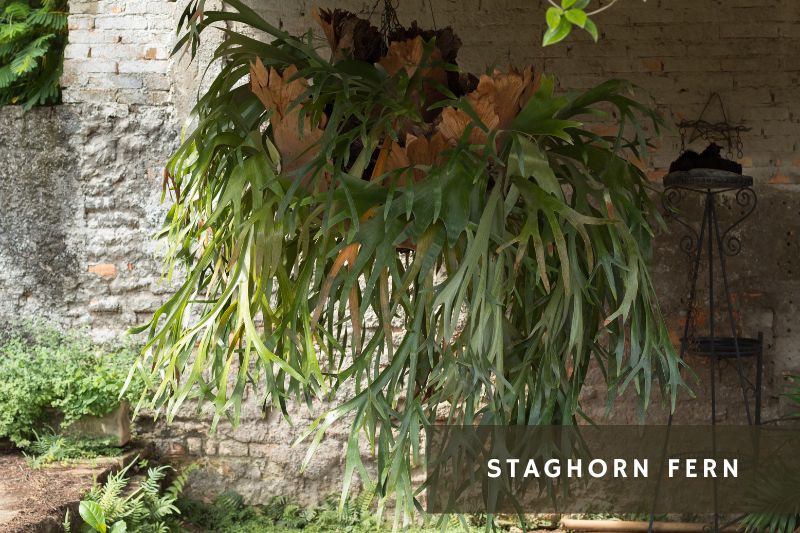
Next up is the Staghorn Fern, a unique and dramatic plant that makes a bold statement. Resembling the magnificent antlers of a stag, the fronds of this fern are split, offering an intriguing, different look.
- Native to: Tropical rainforests in Africa, Australia, and Southeast Asia.
- Care Level: Medium. Staghorn Ferns love bright, indirect light and require less water than many other fern varieties.
- Mature Size: Varies by species, with some reaching up to 3 feet wide.
- Perfect for: Mounting on a wall or hanging from the ceiling to showcase their antler-like fronds.
- Fun Fact: These ferns are epiphytes, meaning they naturally grow on other plants or trees in their native environments.
4. Bird’s Nest Fern (Asplenium nidus)
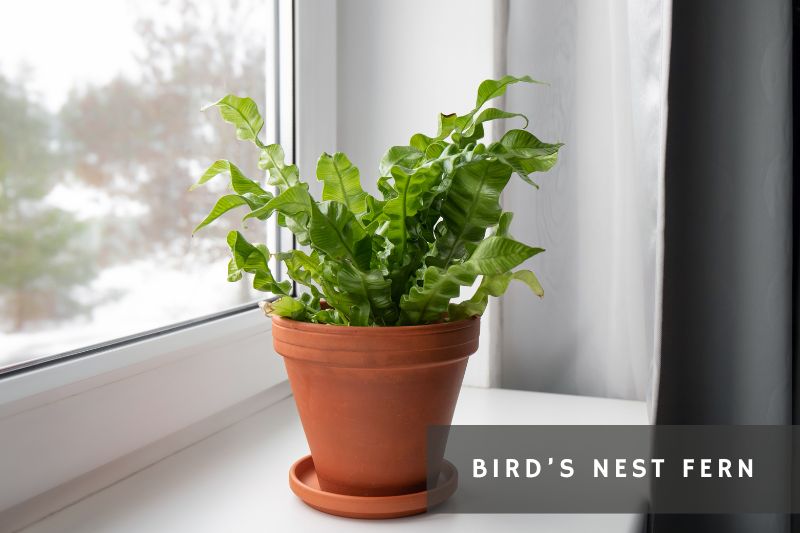
This fern breaks the mold with its unique, wavy fronds that grow from a central rosette, resembling a bird’s nest. It’s a perfect choice for those seeking a touch of the unconventional in their indoor jungle.
- Native to: Tropical Southeast Asia, Eastern Australia, and Hawaii.
- Care Level: Low. Bird’s Nest Ferns adapt well to indoor conditions and can tolerate lower light levels.
- Mature Size: Grows up to 2 feet tall and wide.
- Perfect for: Tabletops or shelves where its distinct fronds can be fully admired.
- Fun Fact: The Bird’s Nest Fern can naturally purify the air in your home, absorbing harmful toxins.
5. Kimberly Queen Fern (Nephrolepis obliterata)
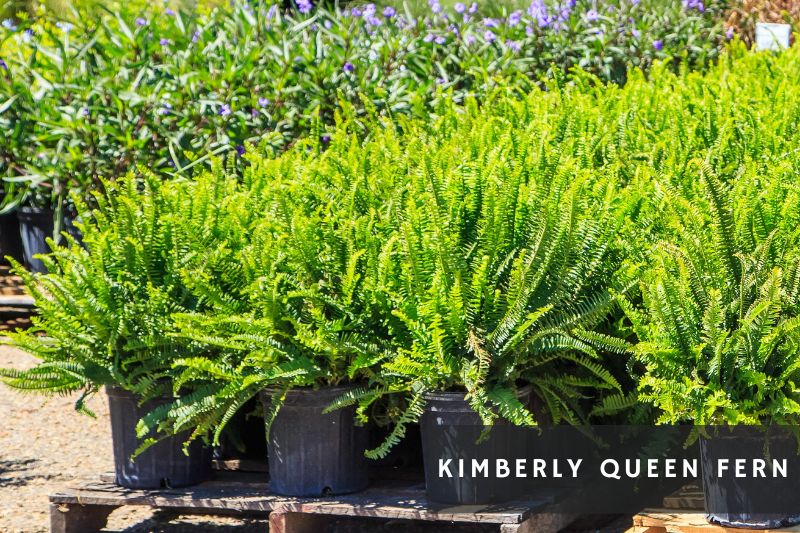
Imagine a proud, resilient fern standing tall in your living space, its sword-shaped fronds neatly arranged in a gorgeous display of greenery. That’s the Kimberly Queen Fern for you!
Unlike other fern varieties that spread their fronds in all directions, this Australian beauty maintains an upright posture, giving it a unique, structured appearance.
Despite its royal name, the Kimberly Queen isn’t fussy. In fact, it’s more heat-tolerant and less thirsty than its popular cousin, the Boston Fern.
- Native to: Australia.
- Care Level: Low to Medium. They love bright light and don’t require overly frequent watering.
- Mature Size: Up to 3 feet tall and wide.
- Perfect for: Bright indoor spaces, patios, and even sunny spots in your garden.
- Fun Fact: While most ferns thrive in shade, the Kimberly Queen doesn’t shy away from the sun. In fact, she loves a good sunbath!
6. Silver Brake Fern (Pteris argyraea)

Silver Brake Fern is a tropical marvel that flaunts eye-catching silver stripes amidst its green foliage. The silver stripes run along the center of the fern’s fronds, giving it a lovely look.
But remember, although this fern is a looker, it doesn’t like too much sun – indirect light will keep those silver stripes dazzling.
- Native to: Tropical Asia.
- Care Level: Medium. Prefers well-drained soil and bright, indirect light.
- Mature Size: Can grow up to 1-2 feet tall and wide.
- Perfect for: Adding a touch of elegance to your indoor green space. This fern thrives in terrariums too!
- Fun Fact: The Silver Brake Fern is part of the Pteris genus, known as ‘brake ferns’. The term ‘brake’ is an old word for fern.
7. Rabbit’s Foot Fern (Davallia fejeensis)
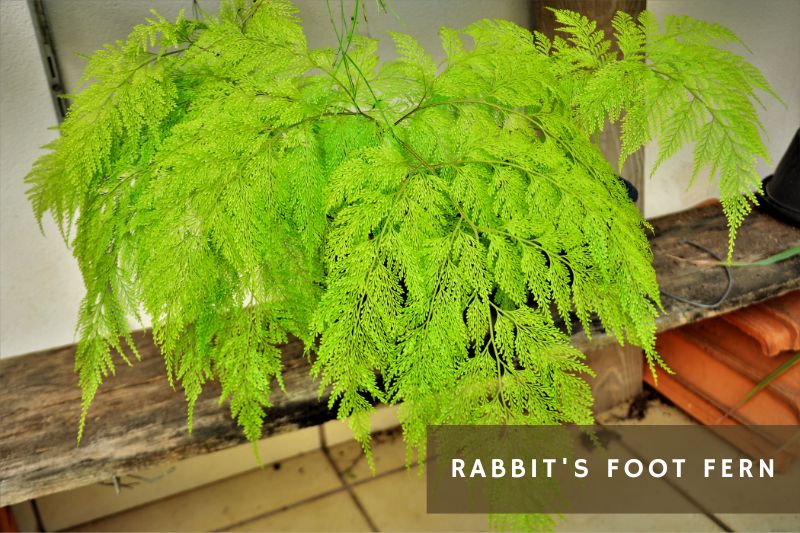
Have you ever seen a fern with fuzzy, furry ‘feet’? Meet the Rabbit’s Foot Fern, a whimsical variety that gets its name from the furry rhizomes that protrude over the side of the pot, resembling a rabbit’s foot.
- Native to: Fiji.
- Care Level: Medium. It requires high humidity, bright, indirect light, and evenly moist soil.
- Mature Size: Grows up to 1-2 feet tall and wide.
- Perfect for: They look fantastic in hanging baskets!
- Fun Fact: Despite its tropical origin, the Rabbit’s Foot Fern can adapt well to indoor environments, tolerating lower light conditions better than many ferns.
8. Button Fern (Pellaea rotundifolia)

The Button Fern will charm you with its adorable, round leaves that look like tiny buttons strung along the wiry, dark stems. This fern is a delight to watch as it unfolds its curly fronds, presenting its “buttons” one by one. A lovely New Zealand native, it brings a playful, vibrant energy to any space.
- Native to: New Zealand.
- Care Level: Medium. It prefers bright, indirect light and can tolerate drier soil than most ferns.
- Mature Size: Up to 1 foot tall and wide.
- Perfect for: Livening up small spaces and adding unique textures to your plant collection.
- Fun Fact: Unlike many ferns that require consistently moist soil, the Button Fern can tolerate being slightly dry between waterings.
9. Japanese Painted Fern (Athyrium niponicum)

The Japanese Painted Fern comes with fronds that display beautiful hues of silver, purple, and blue-green. This fern can transform your indoor garden into an art exhibit. It’s a small, compact variety that brings an understated, elegant beauty to your home.
- Native to: Eastern Asia.
- Care Level: Medium. This fern thrives in moist soil, high humidity, and indirect light.
- Mature Size: Up to 1-2 feet tall and wide.
- Perfect for: Adding a pop of color to your indoor garden. Ideal for terrariums too!
- Fun Fact: The Japanese Painted Fern won the Perennial Plant Association’s Plant of the Year award in 2004.
10. Blue Star Fern (Phlebodium aureum)
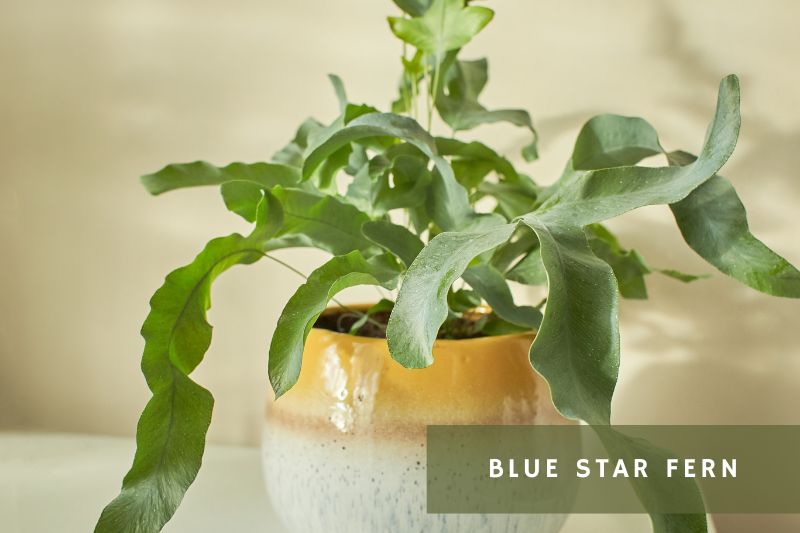
With its unusual blue-green fronds and wavy leaf margins, this fern variety is a star indeed. Blue Star’s eye-catching color and interesting texture make it a standout choice for your indoor jungle.
- Native to: Tropical regions of the Americas.
- Care Level: Low. Blue Star Ferns are hardy, tolerating a variety of indoor conditions and being less demanding in terms of humidity and watering.
- Mature Size: Grows up to 1-3 feet tall and wide.
- Perfect for: Those seeking a hardy yet attractive fern. Excellent for beginners!
- Fun Fact: Despite its common name, the Blue Star Fern is not a true fern. It belongs to the Polypodiaceae family, which is a group of fern allies.
11. Kangaroo Paw Fern (Microsorum diversifolium)
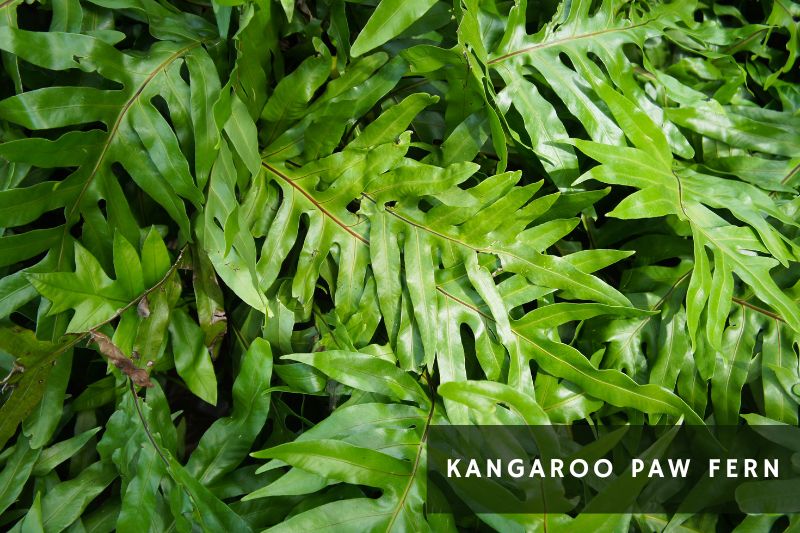
Characterized by its distinctive paw-shaped fronds, the Kangaroo Paw Fern brings the Australian wilderness into your home. The fronds are leathery and glossy, adding a unique texture to your indoor plant collection.
- Native to: Australia.
- Care Level: Medium. Prefers bright, indirect light, and regular watering but allow soil to dry between waterings.
- Mature Size: Grows up to 2 feet tall and wide.
- Perfect for: A tabletop display or hanging basket.
- Fun Fact: The ‘paws’ on this fern can vary greatly in size, creating an intriguing and dynamic display.
12. Crocodile Fern (Microsorum musifolium ‘Crocydyllus’)
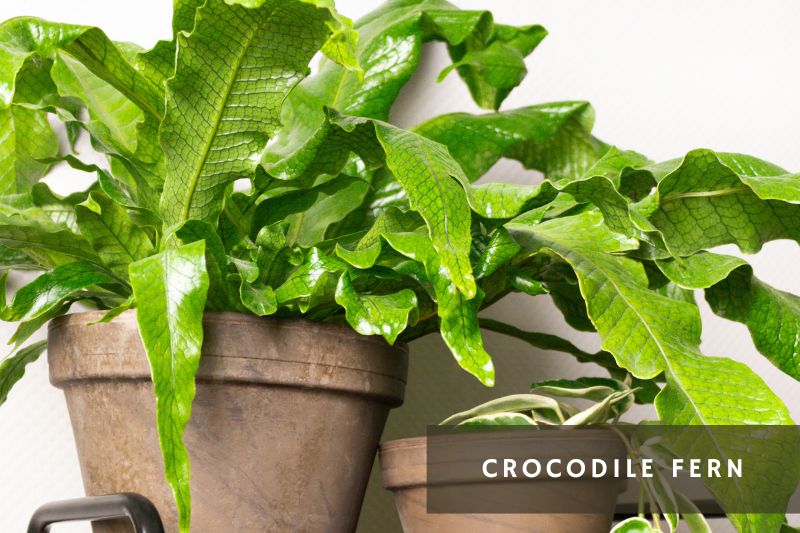
The Crocodile Fern makes a stunning statement with its robust, textured fronds that resemble crocodile skin, hence the name. This fern’s distinctive appearance is actually kind of cool!
- Native to: Southeast Asia and Pacific Islands.
- Care Level: Medium. Prefers bright, indirect light and evenly moist soil. This fern enjoys high humidity, so regular misting is beneficial.
- Mature Size: Grows up to 2-3 feet tall and wide.
- Perfect for: Those seeking a striking, textured plant to add interest to their indoor jungle.
- Fun Fact: The Crocodile Fern is an epiphytic plant, meaning in its natural habitat, it grows on other plants or trees without being parasitic.
13. Hart’s Tongue Fern (Asplenium scolopendrium)
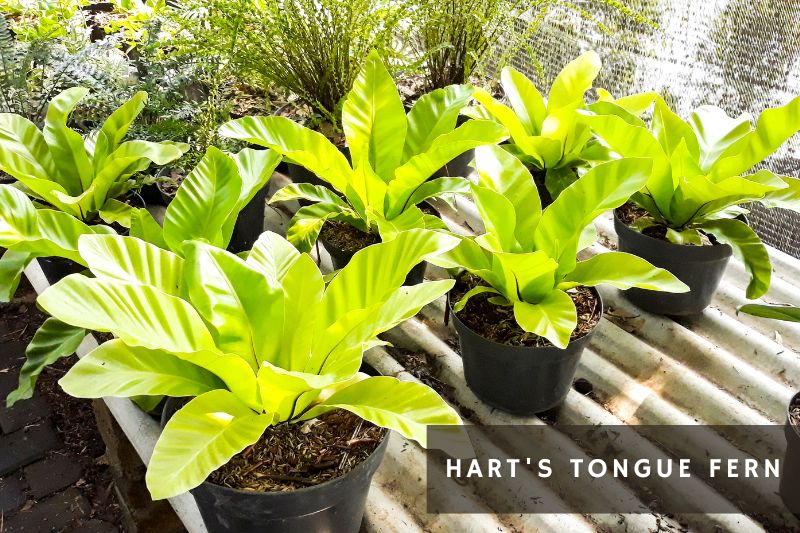
The Hart’s Tongue Fern defies typical fern conventions with its simple, tongue-shaped fronds. This unique feature brings a contemporary, minimalist look to your home.
- Native to: Europe, Asia, and North America.
- Care Level: Medium. Prefers bright, indirect light and requires consistently moist soil.
- Mature Size: Grows up to 1-2 feet tall and wide.
- Perfect for: Those seeking a fern with a modern, simplistic charm.
- Fun Fact: This fern’s scientific name, “scolopendrium”, refers to a centipede, inspired by the spore-bearing structures on the underside of the fronds.
14. Heartleaf Fern (Hemionitis arifolia)
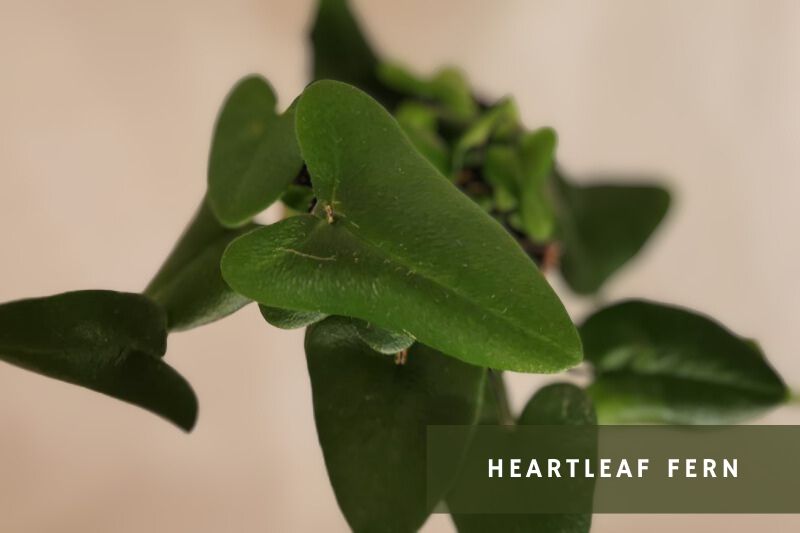
With its sweet, heart-shaped leaves and compact size, the Heartleaf Fern is a true charmer. This darling of the fern world will effortlessly win your heart (and also break it, if you forget to water it).
- Native to: Southeast Asia.
- Care Level: High. The Heartleaf Fern prefers high humidity, indirect light, and consistently moist soil.
- Mature Size: Grows up to 1 foot tall and wide.
- Perfect for: Small spaces or as a desktop plant where you can admire its delightful heart-shaped leaves up close.
- Fun Fact: Heartleaf Fern is often grown as a terrarium plant due to its small size and preference for high humidity.
15. Asparagus Fern (Asparagus Setaceus)
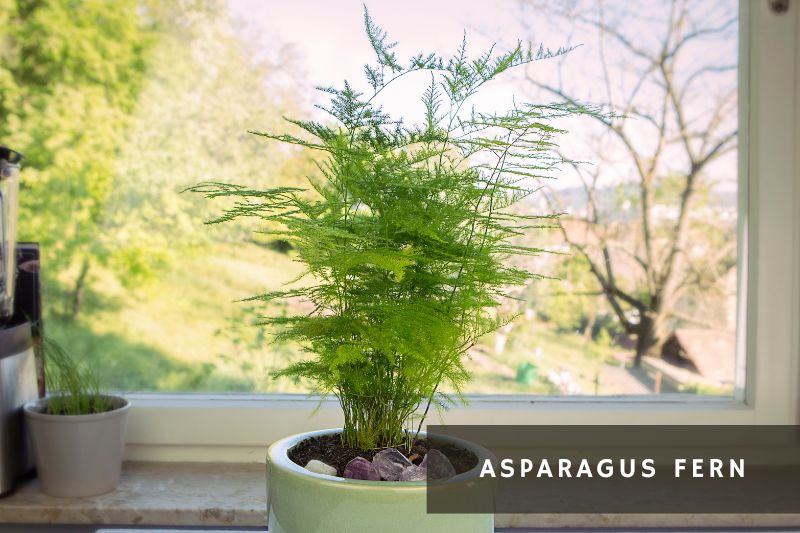
Despite its name, the Asparagus Fern isn’t actually a fern but a member of the lily family. It features feathery, needle-like leaves and can add a lovely textural element to your plant collection.
- Native to: Southern Africa.
- Care Level: Low. Tolerates a range of light conditions and requires watering when the top inch of soil feels dry.
- Mature Size: Grows up to 2-3 feet tall and wide.
- Perfect for: Adding a touch of greenery to desks or tabletops.
- Fun Fact: In the spring, this fern may surprise you with small, white flowers, followed by red berries.
16. Holly Fern (Cyrtomium falcatum)

The Holly Fern, with its glossy, leathery fronds that resemble holly leaves, is a charming addition to any indoor space. It’s a resilient fern that’s more tolerant of dry conditions compared to other fern varieties.
- Native to: East Asia.
- Care Level: Medium. Tolerates low light but prefers bright, indirect light, and requires less frequent watering.
- Mature Size: Grows up to 2 feet tall and wide.
- Perfect for: Indoor gardeners looking for a fern that can tolerate lower humidity.
- Fun Fact: The Holly Fern’s fronds are used in Japan for New Year decorations.
17. Foxtail Fern (Asparagus densiflorus ‘Meyersii’)

Don’t be fooled by its name – the Foxtail Fern is actually a member of the asparagus family, not a true fern. It gets its name from the dense, feathery fronds that grow in an arching form, resembling a fox’s tail.
- Native to: Southern Africa.
- Care Level: Low. The Foxtail Fern is drought-resistant and can adapt to various light conditions. Water when the top inch of soil becomes dry.
- Mature Size: Grows up to 2-3 feet tall and wide.
- Perfect for: Adding textural and visual interest to any indoor space.
- Fun Fact: In the spring, the Foxtail Fern produces small, white flowers followed by bright red berries, adding even more appeal to this unique plant.
Wrapping it up
From the elegant Maidenhair Fern to the unusual Crocodile Fern, we’ve explored 17 unique types of ferns you can grow in your indoor garden. Each fern comes with its own set of care needs and aesthetic appeal, offering something for every plant lover, whether you’re a seasoned green thumb or just starting your plant parenting journey.
Remember, the key to successful fern care is understanding and respecting each plant’s natural habitat and needs. With a bit of love and care, these ferns will reward you with their lush, verdant beauty and transform your indoor space into a peaceful, green haven.

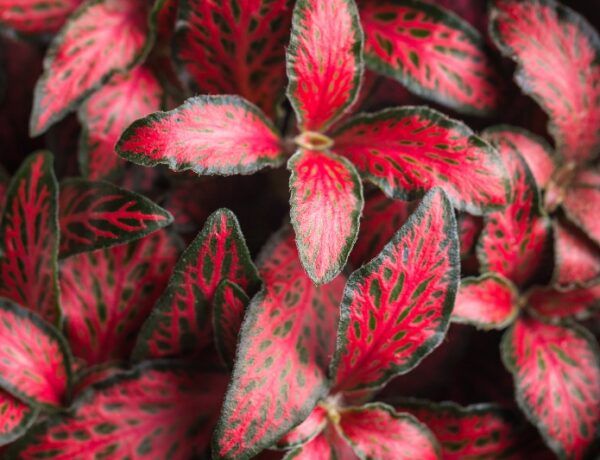
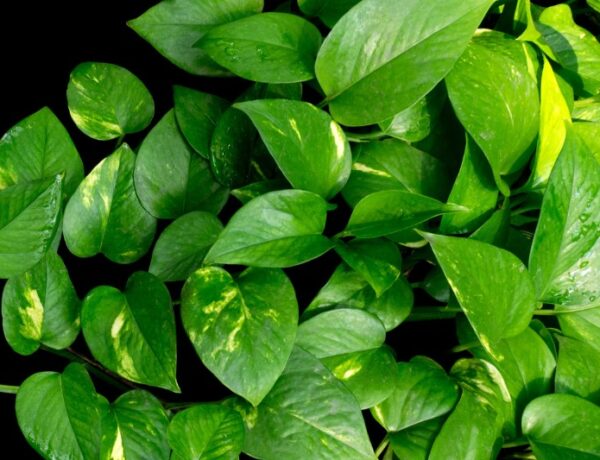
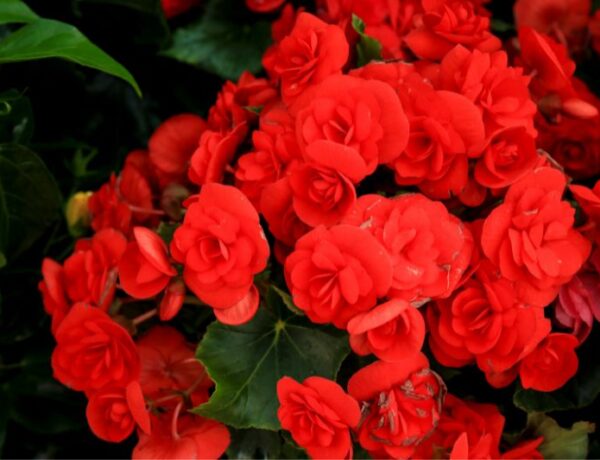


No Comments